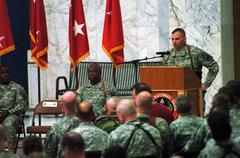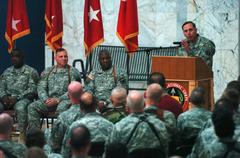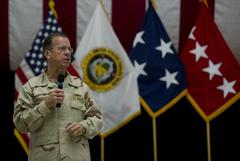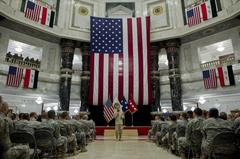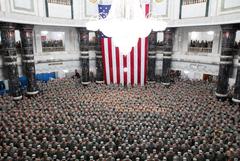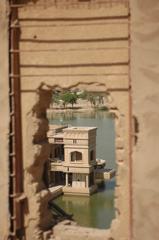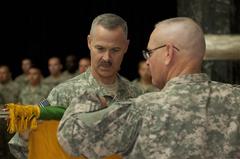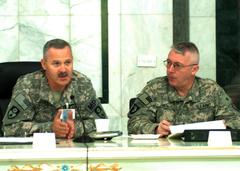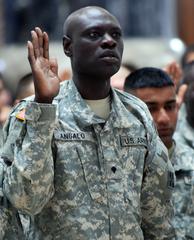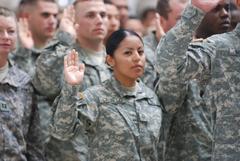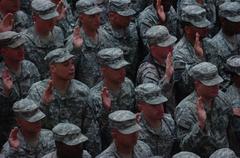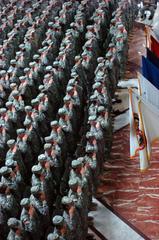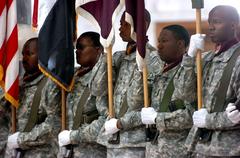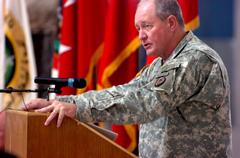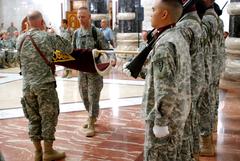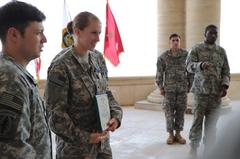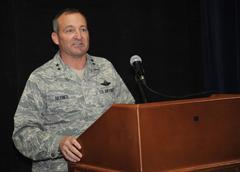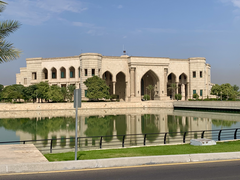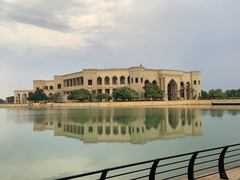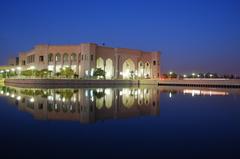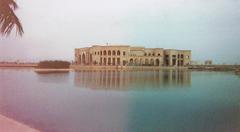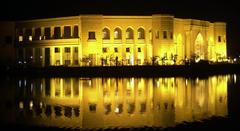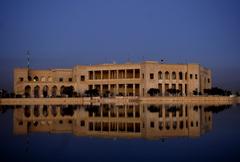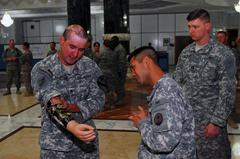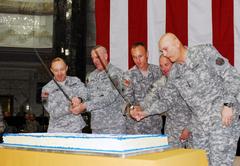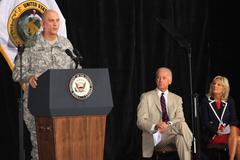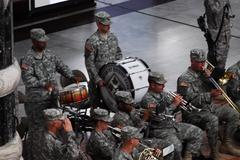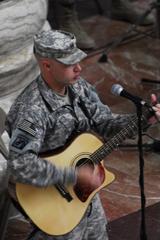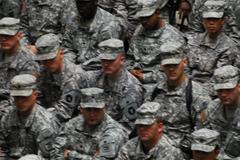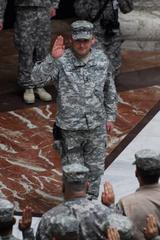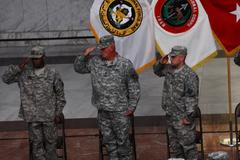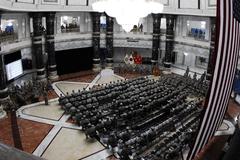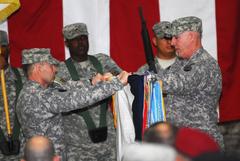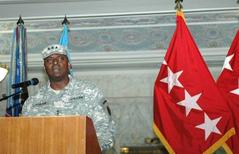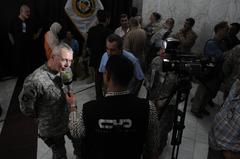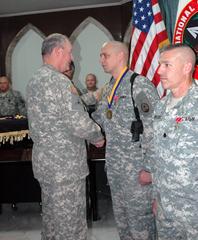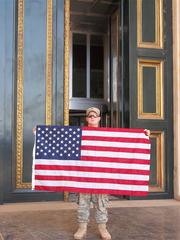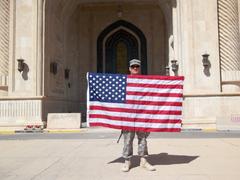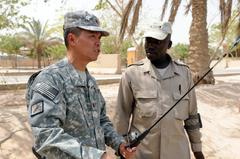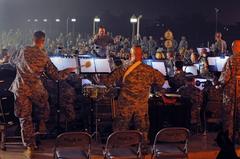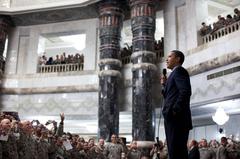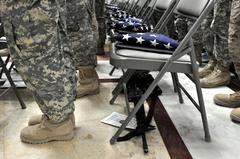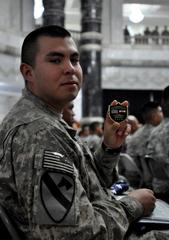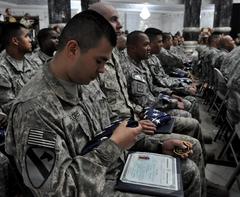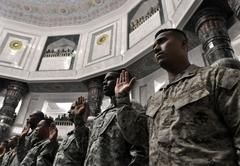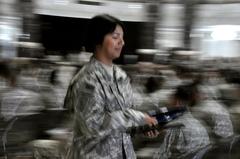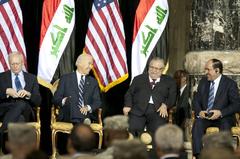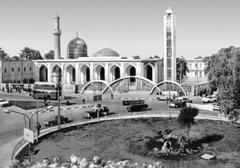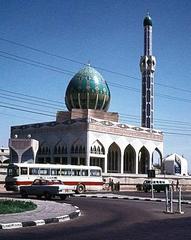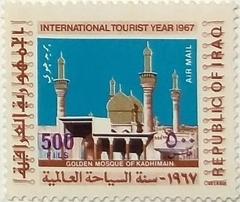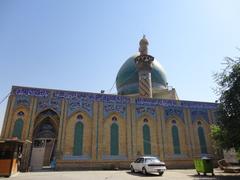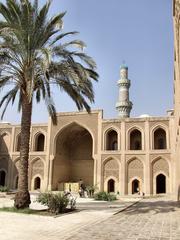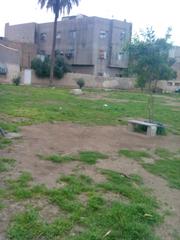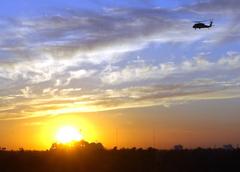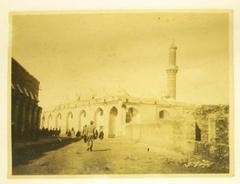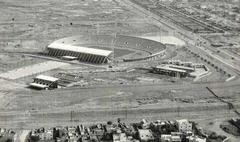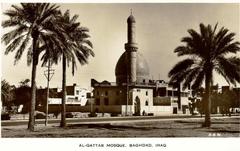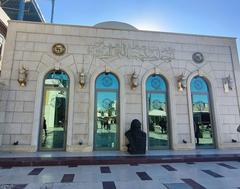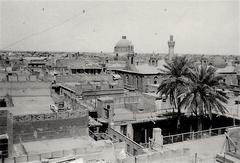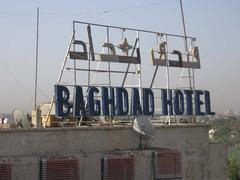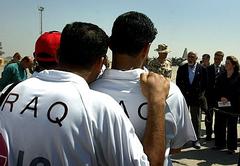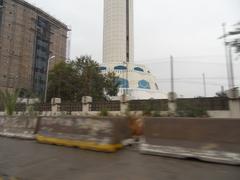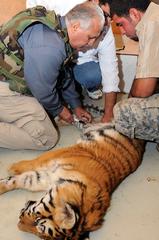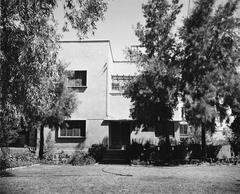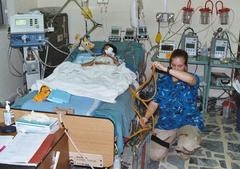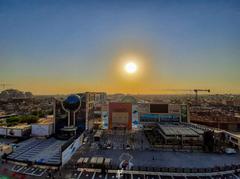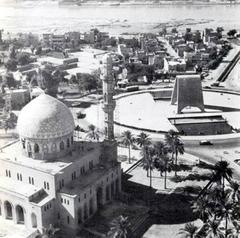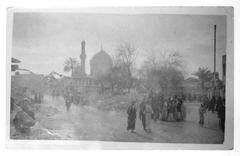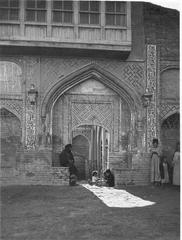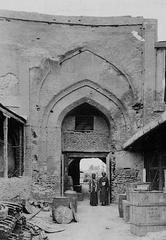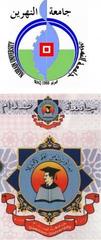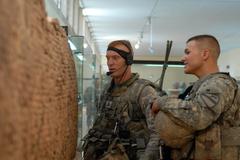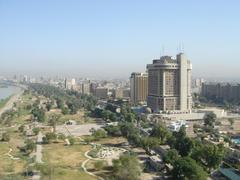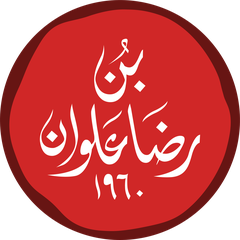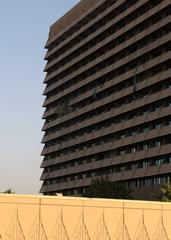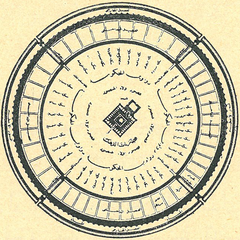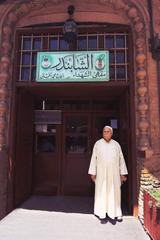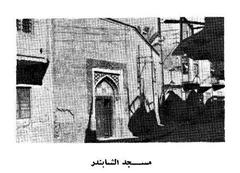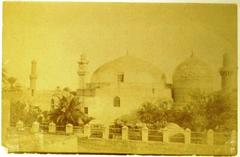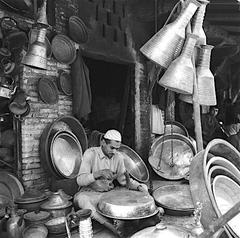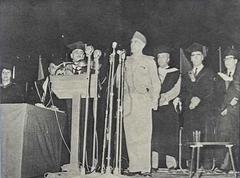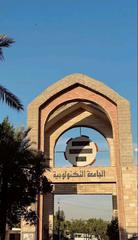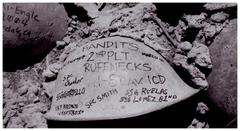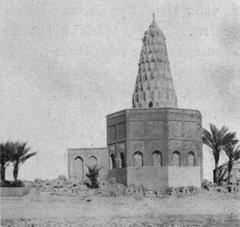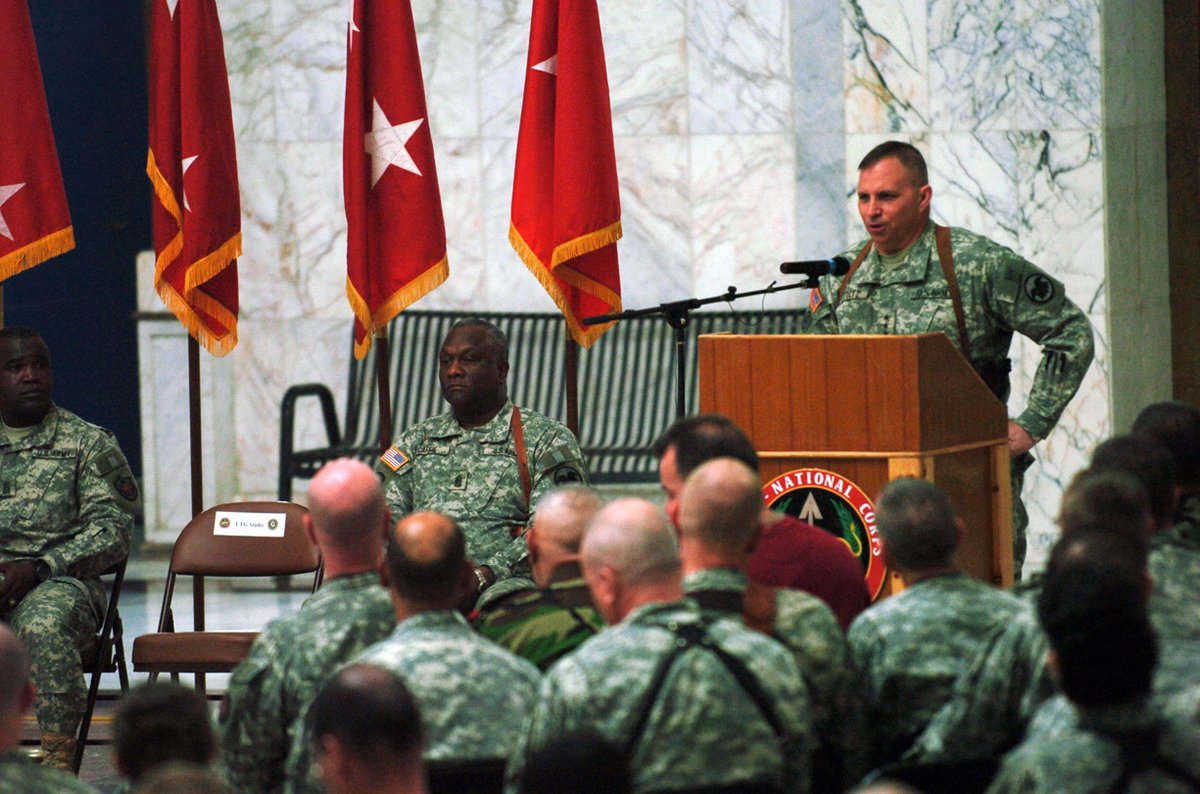
Al-Faw Palace Visiting Hours, Tickets, and Guide to Baghdad Historical Sites
Date: 15/06/2025
Introduction to Al-Faw Palace in Baghdad
Al-Faw Palace, also known as the Water Palace (قصر الفاو), is one of Baghdad’s most prominent architectural and historical landmarks, reflecting Iraq’s layered history, political shifts, and evolving cultural identity. Originally commissioned by Saddam Hussein in the 1990s to mark the Iraqi military’s recapture of the Al-Faw Peninsula during the Iran-Iraq War, the palace was designed to project power and prestige through its grand scale, opulent interiors, and symbolic location on an artificial island surrounded by man-made lakes.
After the 2003 US-led invasion of Iraq, the palace shifted from a symbol of regime authority to a strategic military base, serving as headquarters for the US military’s Camp Victory. In the years since, it has been repurposed as the campus of the American University of Iraq – Baghdad (AUIB), reflecting Iraq’s ongoing journey of renewal and reconciliation with its past.
Due to its location within Baghdad’s highly secured Green Zone and its current institutional use, public access is limited. Visitors must arrange official permission or join guided tours coordinated through the university or authorized tour operators. While there are no standard public visiting hours or ticket sales, occasional special events and exhibitions offer rare opportunities to experience the palace firsthand. Strict security protocols and restricted photography policies apply; visitors must adhere to all regulations and stay aware of current advisories.
This comprehensive guide details Al-Faw Palace’s history, architectural features, visiting information, accessibility, and practical travel tips. It also highlights nearby attractions, ensuring travelers can enrich their visit to one of Iraq’s most fascinating sites. For the latest updates, consult official sources and reputable travel advisories (AP News, Arab America, TravelSetu).
Historical Background
Origins and Construction
Al-Faw Palace was commissioned in the 1990s by Saddam Hussein as a celebration of the Iraqi military’s recapture of the Al-Faw Peninsula. Located about 5–10 km from Baghdad International Airport, the palace was a centerpiece among dozens of grand palaces constructed during Hussein’s rule, serving as residences, government offices, and venues for state events.
Architecture and Symbolism
The palace’s design is a fusion of traditional Islamic motifs—such as domes, arches, and intricate tilework—with modern neoclassical elements. Its massive dome, artificial lakes, and ceremonial bridges evoke both the lushness of the Al-Faw Peninsula and the power of the regime. Over 62 rooms and 29 bathrooms are adorned with decorative details, some of which still carry traces of Saddam Hussein’s personal emblems (AP News).
Political and Military Significance
Initially a symbol of Hussein’s strength, Al-Faw Palace became a pivotal site during the 2003 Iraq War. It was bombed, seized, and subsequently served as the headquarters for US and coalition military operations (Camp Victory). The palace also temporarily housed Saddam Hussein after his capture and played a role in his subsequent trial.
Post-2003 Transformation
After coalition withdrawal, the palace was repurposed as the campus of the American University of Iraq – Baghdad, balancing historical preservation with modern educational needs. This transformation is emblematic of Iraq’s broader efforts to reclaim and repurpose sites of its turbulent past.
Location and Setting
Al-Faw Palace is located in western Baghdad within the Victory Base Complex, an artificial island surrounded by a man-made lake—a design that offered both security and dramatic visual impact. The palace is accessible only through the secure Green Zone, which requires prior clearance for entry (AP News).
Architectural Features
Monumental Scale and Symmetry
The palace’s imposing scale is marked by symmetrical wings, vast halls, and broad ceremonial approaches, all radiating from a central axis. Its limestone and marble façade, classical arches, and decorative balustrades reflect a blend of Iraqi, Islamic, and modernist influences (Kurby Blog).
Interior Design
Inside, soaring ceilings, grand chandeliers, and marble floors set a tone of luxury. Ornate tilework, carved wood, and gilded moldings showcase both Iraqi artistry and imported luxury materials. Saddam Hussein’s initials and other regime symbols are still visible in some places, though many have been removed.
Defensive and Ceremonial Features
The palace’s design balances ceremonial grandeur with security: high perimeter walls, guard towers, and controlled entry points blend seamlessly into the architectural language, while bridges and causeways provide both physical and symbolic connections to the mainland.
Visiting Al-Faw Palace: Practical Information
Visiting Hours and Ticketing
Al-Faw Palace is not open to the general public. There are no official visiting hours or ticket sales; access is strictly controlled due to its current use as a university and government site. Special tours or event access may be available through the American University of Iraq – Baghdad or select tour operators. Always confirm arrangements in advance (TravelSetu).
Access and Security
Entry requires prior authorization, security clearance, and typically an escort. Multiple checkpoints and background verification are standard. Visitors should carry identification and follow all security protocols.
Transportation
The palace is about 10 km from Baghdad International Airport. Transportation is by pre-arranged private vehicle or as part of a guided tour; public transportation and taxis are not suitable due to security restrictions.
Accessibility
While some adaptations have been made, many areas are not fully accessible due to the building’s age and security requirements. Inquire in advance if you have mobility needs.
Visitor Experience and Highlights
- The palace’s artificial lake and iconic “Saddam bass” fish
- Ornate bridges and ceremonial approaches
- Grand entrance halls and reception rooms
- Surviving decorative features and architectural motifs
Guided tours, when available, offer insights into the history, architecture, and cultural significance of the site.
Safety, Dress Code, and Etiquette
- Register with your embassy upon arrival in Baghdad.
- Always travel with a reputable guide or as part of an organized tour.
- Dress modestly (covering shoulders, arms, and legs); women should bring a headscarf for religious sites.
- Avoid photographing military personnel, checkpoints, or sensitive infrastructure.
- Stay up to date with local security advisories and follow authorities’ instructions (Travel with the Greens).
Facilities and Amenities
There are no public amenities such as cafés or souvenir shops at Al-Faw Palace. Bring your own water and snacks, and use restroom facilities before arrival. Guided tours provide the necessary information, as on-site signage is minimal.
Photography Policy
Photography is generally allowed in public areas but may be restricted in sensitive zones. Always ask your guide before taking photos.
Best Time to Visit
Baghdad’s most comfortable months are October through April, with mild temperatures suitable for sightseeing. Summers are extremely hot and less ideal for travel.
Costs and Fees
There is no standardized entrance fee for Al-Faw Palace. Costs are included in guided tour packages, typically ranging from $100 to $250 USD per person, depending on the provider (Against the Compass).
Emergency Contacts
- Police: 104
- Ambulance: 122
- Fire: 115
- Embassy or consulate in Baghdad
Nearby Baghdad Historical Sites
- National Museum of Iraq: Artifacts from Mesopotamian civilizations.
- Al-Shaheed Monument: Memorial to Iraqi martyrs.
- Al-Mutanabbi Street: Cultural hub and book market.
- The ancient city of Babylon: Approximately 90 km south (Arab America).
Frequently Asked Questions (FAQ)
Q: Are there standard visiting hours or tickets for Al-Faw Palace?
A: No. Visits are by pre-arranged tours or official invitation only, and there are no independent ticket sales.
Q: Is the palace open to tourists?
A: Only with prior authorization and as part of guided tours.
Q: Can I take photographs?
A: Allowed in public areas, but restricted elsewhere. Always ask your guide.
Q: Are there facilities for visitors?
A: No public amenities; bring your own supplies.
Q: How do I arrange a visit?
A: Contact the American University of Iraq – Baghdad or a reputable local tour operator; expect to arrange several weeks in advance.
Summary and Visitor Tips
Al-Faw Palace exemplifies Iraq’s turbulent history, architectural grandeur, and ongoing transformation. While access is strictly limited, those able to arrange a visit will find a site rich in symbolism and historical resonance. Prospective visitors should plan well ahead, adhere to all security requirements, and consider pairing their visit with other historic sites for a comprehensive Baghdad experience. Reliable information can be found through official channels, the Audiala app, and recognized travel advisories (TravelSetu, Against the Compass, AP News).
Plan Your Visit with Audiala
Stay informed and get exclusive travel updates by downloading the Audiala app. Discover curated guides, local insights, and real-time security alerts to make your Baghdad trip safe and unforgettable.
Sources and Further Reading
- AP News
- Arab America
- TravelSetu
- Against the Compass
- Travel with the Greens
- Kurby Blog
- e-a-a.com
- Wondrous Drifter
Alt text: View of Al-Faw Palace reflecting on the Tigris River in Baghdad
View Al-Faw Palace on Google Maps
Virtual Tour of Baghdad Historical Sites
For related articles, see:
